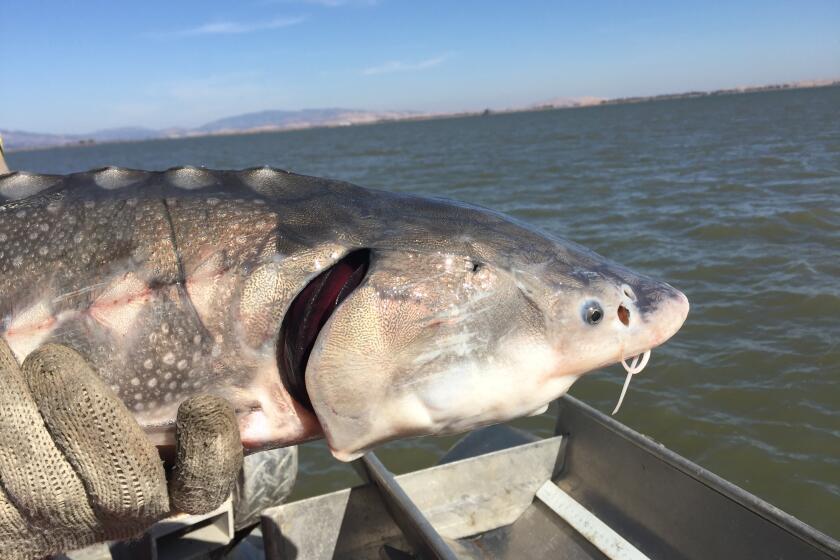Combined Effort Saves the Aleutian Canada Goose
Interior Secretary Bruce Babbitt will announce today that three decades of conservation efforts have saved the Aleutian Canada goose, which was near extinction.
Many of the birds winter near Modesto, where private landowners have played a key role in helping the species repopulate, officials said. Working in concert with federal wildlife agencies, owners of two large ranches have prohibited fowl hunting on their property and developed roosting wetlands for the geese that migrate annually from Alaska.
The Department of the Interior expects to remove the birds from the threatened species list within weeks, although an exact date has not been set.
“It’s been a 50-50 effort between public agencies and private landowners,” said Dennis Woolington, a biologist at the San Luis Wildlife Refuge in the San Joaquin Valley.
The birds, which are gray with a distinctive white neckband, nest in summer on islands in the Alaska Maritime National Wildlife Refuge in the Aleutians. They began to sharply decline in number after fur trappers introduced foxes to the islands around the turn of the century.
Biologists found no Aleutian Canada geese from 1938 through 1962 but found a remaining population on the rugged, remote Buldir Island in the western Aleutians.
The geese were declared an endangered species in 1967 under the Endangered Species Protection Act of 1966, a law that preceded the Endangered Species Act by seven years.
The first official count of the birds in 1975 revealed only 790 in existence. The birds’ status was upgraded from endangered to threatened in 1990 after geese populations reached 6,300. Now, an estimated 30,000 geese make the trip south each winter.
Repopulation efforts began with the relocation of foxes from the birds’ habitat. Federal game and wildlife agencies then set out to locate the remaining birds’ winter nesting grounds. They found that about 98% of the geese were wintering on two large ranches in the San Joaquin Valley, the Mape’s Ranch owned by Bill Lyons and the Faith Ranch owned by Robert Gallo of the E & J Gallo winery.
The wildlife agencies enlisted the ranch owners’ help to reintroduce and protect the geese, most notably by creating small islands in marshlands on their property so the geese could nest. The owners also agreed to rid their land of the geese’s main predators in California--hunters--by implementing the ban on fowl hunting.
For many years, ranch owners had allowed small groups called duck clubs to hunt on their lands. The owners banned the practice after the geese were listed as endangered.
“There were probably about 40 duck clubs in the 1930s,” said Mape’s Ranch manager Chuck Lyons. “We’ve gotten rid of them all.”
In this case, the ranch owners set their cattle out to graze on the wetlands, leaving the grass short enough for the geese to feed. The owners also set aside part of their corn crops for the geese to eat.
Woolington said that the thriving population of geese would aid some Alaskans who kill the birds in subsistence hunting. And if the geese make as full a recovery as is projected in the next five years, sport hunting of the bird again would be allowed, officials said.
More to Read
Start your day right
Sign up for Essential California for news, features and recommendations from the L.A. Times and beyond in your inbox six days a week.
You may occasionally receive promotional content from the Los Angeles Times.






